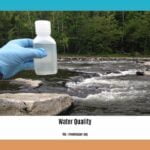Discover the countless advantages of river sand that can transform construction projects, enhancing both quality and sustainability. As a seasoned civil engineer and expert in building materials, I have witnessed firsthand the remarkable benefits that river sand brings to construction. From its unique chemical composition to its superior performance, river sand stands out as a trusted resource for builders worldwide. In this article, we will delve into the diverse applications of river sand and explore how it can elevate construction quality while ensuring long-lasting sustainability.
Key Takeaways:
- Smooth and clean particles – River sand particles are smooth and clean, making it suitable for various purposes.
- Wide range of sources and low cost – River sand is readily available from a variety of sources and is more cost-effective compared to other types of sand.
- No taste – Unlike sea sand, river sand does not have a salty taste.
- Good water and air permeability – River sand has excellent water permeability, allowing for proper drainage and aeration for plants.
- Ideal for gardening – River sand retains moisture better than other sand types, making it ideal for gardens, especially in drought-prone areas. It also provides good drainage and aeration for plants.
- Improves soil quality – River sand can be used to break up compacted soil, improving poor drainage and reducing soil weight.
- Commonly used in construction – Due to its fine texture and ability to hold moisture, river sand is frequently used in construction for concrete, plastering, and brick or masonry work.
Advantages of River Sand

River sand has long been recognized as a valuable material in the world of construction. Its unique properties and numerous benefits make it a popular choice for various applications. In this article, we will explore the advantages of river sand and how it contributes to enhanced construction quality and sustainability.
Smooth and Clean Particles
One of the main advantages of river sand is its smooth and clean particles. Unlike other types of sand, river sand is free from impurities such as clay, silt, and organic matter. This makes it suitable for a wide range of purposes, including concrete, plastering, and brick or masonry work. The smoothness of the particles also enhances the workability of the sand, allowing for easier handling and construction.
Wide Range of Sources and Low Cost
River sand is abundantly available and has a wide range of sources. This makes it easily accessible and cost-effective compared to other types of sand. Its affordability and availability make it a preferred choice for construction projects, both small-scale residential constructions and large-scale infrastructure developments.
No Taste, Suitable for Multiple Uses
Another advantage of river sand is that it does not have a salty taste like sea sand. This makes it suitable for various applications, including gardening and landscaping. Sea sand, due to its salt content, can be harmful to plants and soil quality. River sand, on the other hand, provides good water and air permeability, allowing for proper drainage and aeration for plants.
Ideal for Gardening
River sand is particularly well-suited for gardening purposes. Its ability to retain moisture better than other types of sand makes it perfect for use in gardens, especially in drought-prone areas. It provides an optimal balance between water drainage and water retention, creating a favorable environment for plant growth. Additionally, river sand helps improve the overall soil quality by breaking up and reducing the weight of compacted soil, thus enhancing poor drainage.
Commonly Used in Construction
River sand is widely used in the construction industry for various purposes. Its fine texture and moisture-holding capabilities make it an ideal choice for concrete, plastering, and brick or masonry work. The use of river sand in these applications helps improve the strength and durability of the structures, ensuring their longevity. Moreover, river sand allows for better workability and smooth finishing, leading to enhanced construction quality.
In conclusion, river sand offers numerous advantages that contribute to enhanced construction quality and sustainability. Its smooth and clean particles, wide availability, low cost, and suitability for various uses make it a favored choice among civil engineers and construction professionals. Whether it’s for gardening, landscaping, or construction purposes, river sand’s unique properties make it an essential building material for a wide range of projects.
Did you know there are numerous advantages of grey water recycling? Find out the benefits of reusing grey water by clicking here.
Curious about the advantages of hard water in points? Explore the benefits of using hard water by clicking here.
Discover the advantages of soft water in points and why it might be beneficial for you by clicking here.
Are you interested in learning some intriguing facts about the African bush elephant? Click here to uncover captivating information about this majestic creature.
If you’re curious about the distribution of the alpine tundra biome, click here to explore an informative map.
The Advantages of River Sand in Construction and Gardening
Advantages of River Sand:
- Smooth and clean particles: River sand particles are smooth and free from impurities like clay and organic matter, making it ideal for various applications.
- Wide range of sources: River sand is sourced from various locations, ensuring easy accessibility to this material.
- Convenient materials and low cost: River sand is readily available and affordable, making it a cost-effective choice for various construction projects.
- No taste: Unlike sea sand, river sand does not have a salty taste, making it more suitable for certain applications.
- Good water and air permeability: River sand has excellent permeability properties, allowing water and air to flow through it easily.
River Sand’s Application in Gardening
- Retains moisture: River sand, with its small particle size, has the ability to retain moisture better than other types of sand. This makes it ideal for use in gardens, especially in drought-prone areas.
- Provides good drainage and aeration: River sand aids in drainage and aeration in gardens, improving soil conditions for optimal plant growth.
Sources:
1. 15 Differences Between Sea Sand and River Sand by Beidoou.
2. The Benefits Of Using River Sand In Your Garden by Accessible Gardens.
Key Takeaways:
- River sand is smooth, clean, and free from impurities, making it suitable for various applications in construction and gardening.
- It is easily accessible and cost-effective compared to other types of sand.
- River sand is tasteless, unlike sea sand, making it more suitable for certain applications.
- It retains moisture better than other types of sand, making it ideal for use in gardens, especially in drought-prone areas.
- River sand aids in drainage and aeration, improving soil conditions for plant growth.
River sand is a valuable building material with unique advantages that contribute to enhanced construction quality and sustainability. Its availability, affordability, and superior performance make it a preferred choice in the construction industry. Additionally, its ability to retain moisture and improve soil conditions further highlights its significance in gardening and landscaping. By harnessing the advantages of river sand, construction and gardening professionals can ensure better project outcomes and contribute to a more sustainable environment.
The Advantages of River Sand for Enhanced Construction Quality and Sustainability

As an experienced civil engineer specializing in construction materials, I am excited to share with you the numerous advantages of using river sand in construction projects. River sand is a valuable resource that offers unique benefits to enhance construction quality and promote sustainability.
Advantages of River Sand
Smooth and Clean Particles: River sand has smooth and clean particles, making it ideal for various construction applications. Its fine texture and excellent binding properties improve the strength, workability, and durability of concrete, reducing the risk of cracking. The smooth particles also contribute to a smooth finish, enhancing the overall construction quality.
Wide Range of Sources: River sand is sourced from various locations, providing easy accessibility to this material. With a wide range of sources, construction projects can be efficiently supplied with river sand, ensuring a consistent and reliable material for optimal performance.
Convenient and Cost-Effective: River sand is readily available and affordable, making it a cost-effective option for different construction projects. Its convenience and affordability contribute to the economic viability of building projects, which is essential for both small-scale residential constructions and large-scale infrastructure developments.
No Taste: Unlike sea sand, river sand does not have a salty taste. This makes it more suitable for certain applications where taste may be a concern, such as gardening and landscaping projects.
Good Permeability properties: River sand has excellent water permeability and air permeability properties. Its porous nature allows water and air to flow through it easily, facilitating proper drainage and preventing waterlogged conditions. This is especially beneficial in construction projects that require efficient water management and sustainable practices.
River Sand’s Application in Gardening
In addition to its advantages in construction, river sand also offers unique benefits when used in gardening:
Moisture Retention: The small particle size of river sand allows it to retain moisture better than other types of sand. This is particularly advantageous in gardens, especially in drought-prone areas. By using river sand, gardeners can ensure a consistent water supply for their plants, promoting healthy growth and reducing water wastage.
Good Drainage and Aeration: River sand helps with drainage and aeration in gardens, improving soil conditions for plant growth. It prevents waterlogging and compaction, allowing roots to access oxygen and nutrients. This contributes to healthier plants with stronger root systems and overall better performance.
Key Takeaways:
- River sand has smooth and clean particles, enhancing construction quality and providing a smooth finish.
- Its wide range of sources makes it easily accessible for various construction projects.
- River sand is a convenient and cost-effective option, contributing to the economic viability of building projects.
- Unlike sea sand, river sand has no taste, making it suitable for applications where taste may be a concern.
- Its good permeability properties allow for efficient water management and sustainable practices in construction.
- In gardening, river sand retains moisture better than other types of sand, providing a consistent water supply for plants.
- River sand promotes good drainage and aeration in gardens, supporting healthy plant growth.
Sources:
1. Beidoou. “15 Differences Between Sea Sand and River Sand.” Beidoou, source.
- Accessible Gardens. “The Benefits Of Using River Sand In Your Garden.” Accessible Gardens, source.
The Advantages of River Sand for Enhanced Construction Quality and Sustainability
River sand is a valuable building material that offers numerous advantages in the construction industry. Its unique properties and composition make it an excellent choice for enhancing construction quality and promoting sustainability. In this article, we will explore the benefits of river sand and its applications in construction, emphasizing its significant contribution to the strength, workability, and durability of structures.
Benefits of River Sand in Construction
River sand provides several key advantages that make it highly desirable in construction projects. Here are the primary benefits of using river sand:
Enhanced Strength and Workability: River sand’s fine texture enables better blending with cement, resulting in stronger and more workable concrete structures. The smooth and clean particles of river sand contribute to a more robust bond between the cement and aggregates, enhancing the overall strength of the concrete.
Improved Durability and Reduced Cracking: The binding properties of river sand are instrumental in enhancing the durability of concrete. By reducing the risk of cracking and increasing the overall durability, river sand helps to ensure longer-lasting structures. Its contribution to the concrete’s cohesive properties helps resist the effects of weathering, erosion, and other environmental factors.
Applications of River Sand in Construction
River sand finds versatile applications in the construction industry due to its unique properties and performance advantages. Some of the key applications include:
- Construction of Buildings, Roads, Bridges, and Dams: River sand is commonly used in various infrastructure projects due to its superior binding properties and ease of use. Its fine texture and excellent workability make it an ideal choice for constructing buildings, roads, bridges, and dams.
Alternative Materials and Environmental Considerations
While river sand offers significant benefits in construction, there are limitations to its supply and environmental impact to consider. As the availability of river sand can be inadequate and uncertain, it is important to explore alternative materials to ensure the sustainability of construction practices. Manufactured sand (M-sand) and quarry dust sand are some of the viable alternatives to river sand. These alternatives offer similar properties and can be used as substitutes in various construction applications.
Key Takeaways:
- River sand enhances the strength, workability, and durability of concrete structures.
- It is commonly used in the construction of buildings, roads, bridges, and dams.
- Alternative materials like M-sand and quarry dust sand can be used as substitutes for river sand.
- Considering the limited availability of river sand, exploring alternative options is crucial for sustainable construction practices.
Citation:
1. The Benefits of River Sand and Gravel: A Comprehensive Guide – Link to Source
2. Exploring the Difference in M Sand and River Sand – Link to Source
FAQ
Q1: What are the advantages of river sand?
A1: River sand has several advantages, including smooth and clean particles, wide availability and low cost, no taste, good water and air permeability, and its suitability for gardening and improving soil quality.
Q2: Why is river sand considered suitable for various purposes?
A2: River sand has smooth and clean particles, making it suitable for various applications such as construction, gardening, and improving soil drainage.
Q3: Is river sand readily available and affordable?
A3: Yes, river sand has a wide range of sources and is readily available at a lower cost compared to other types of sand, making it a convenient and cost-effective option for construction projects.
Q4: What are the benefits of using river sand in gardening?
A4: River sand retains moisture better than other types of sand, making it ideal for gardening, especially in drought-prone areas. It also provides good drainage and aeration for plants, improving soil conditions and promoting healthy plant growth.
Q5: How does river sand improve soil quality?
A5: River sand can be used to break up and reduce the weight of compacted soil, enhancing soil drainage and improving poor drainage conditions.
- Sept 31 Myth: Unveiling Calendar Secrets - March 18, 2025
- How Long & Till December 18, 2025: Accurate Countdown Guide - March 18, 2025
- Discover Japanese Artists: A Complete History - March 18, 2025
















